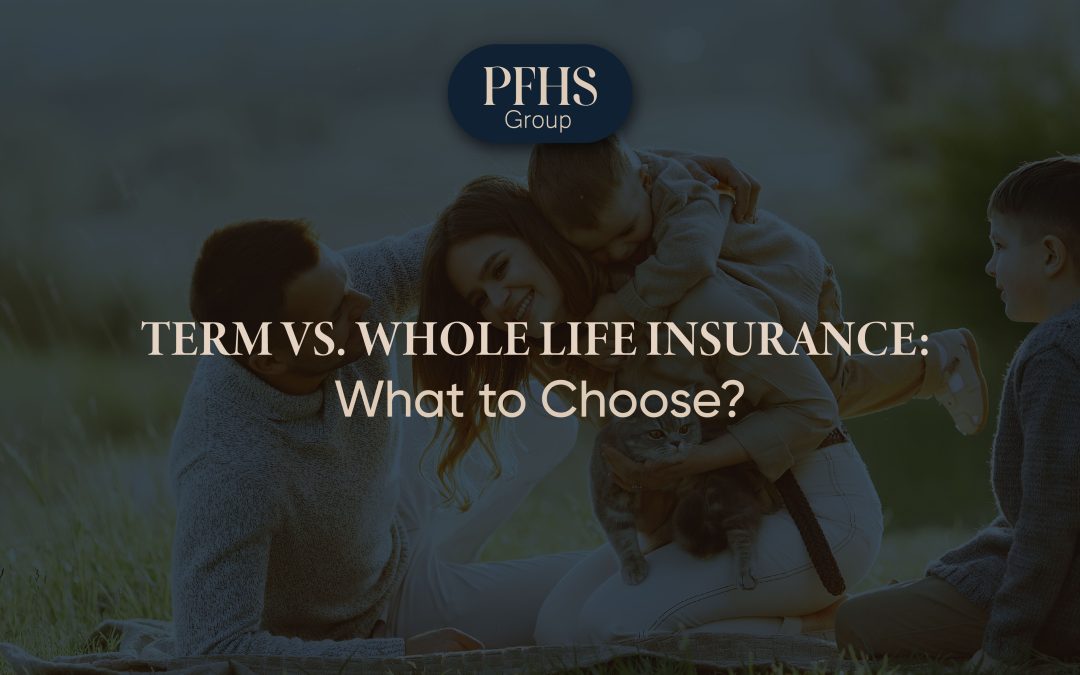When it comes to life insurance, one of the most critical decisions you’ll make is choosing between term and whole life insurance. Both types offer unique benefits, but understanding their differences can help you make an informed choice that aligns with your financial goals and personal circumstances.
Understanding Term Life Insurance
Term life insurance presents coverage for a particular term or period that generally ranges from 10 to 30 years. If a policyholder dies during the term, their beneficiaries receive a death benefit. However, if the term expires before the policyholder’s death, no benefit is paid.
Pros of Term Life Insurance
Affordability
Term life insurance generally has lower premiums compared to whole life insurance, making it an attractive option for young families or those on a budget.
Simplicity
This insurance is quite simple and easy to understand. You pay a fixed premium for a set period, and the policy pays a death benefit if you die during that term.
Flexibility
Policies can be tailored to fit specific needs, such as aligning the term with the length of a mortgage or until children reach adulthood.
Cons of Term Life Insurance
No Cash Value
There is no cash value over time with term life policies. If the policy expires without a claim, you won’t receive any money back.
Limited Coverage Period
Once the term ends, you must either renew the policy at a higher premium or purchase a new one, which can be costly if your health has declined.
Understanding Whole Life Insurance
Whole life insurance (a type of permanent life insurance) provides coverage for the entire lifetime, as long as premiums are paid. Its cash value component also grows over time.
Pros of Whole Life Insurance
Lifetime Coverage
Whole life insurance ensures coverage for the whole life. In other words, there is a death benefit that will be paid out irrespective of when you pass away.
Cash Value Accumulation
Part of your premium goes into a cash value account, which grows over time. It can be borrowed against this cash value or used to pay premiums.
Fixed Premiums
Premiums remain constant throughout the life of the policy, making it easier to budget for the long term.
Cons of Whole Life Insurance
Higher Premiums
Whole life insurance premiums are significantly higher than those for term life insurance, which can be a barrier for some individuals.
Complexity
The additional features, like cash value accumulation and potential dividends, can make whole life policies more complicated to understand.
Lower Investment Returns
The returns on the cash value component are usually low.
Which One is Right for You?
The decision between term and whole life insurance is based on your individual needs, financial scenario, and long-term goals.
Consider Term Life Insurance If:
– You need coverage for a specific period, such as the length of a mortgage or until your children are financially independent.
– You are looking for a cost-effective way to provide financial protection for your family.
– You prefer the simplicity of a straightforward insurance policy without the complexities of cash value accumulation.
Consider Whole Life Insurance If:
– You want lifelong coverage and the peace of mind that comes with knowing your beneficiaries will receive a death benefit regardless of when you pass away.
– You are interested in building cash value that you can access during your lifetime.
– You have the financial means to afford higher premiums and are looking for a stable, long-term investment component.
Conclusion
Ultimately, the best choice is the one that aligns with your financial objectives and provides the security you seek for your loved ones. Consider consulting with a financial advisor to evaluate your options and make an informed decision that best suits your unique circumstances.

